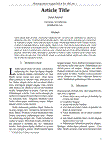| Sumario: | In nature, both species were identified as carnivorous and fed commonly on trash fish. These two marine fish were studied for optimum protein requirement and optimum energy content of compounded feeds. Those marine fish raised in tropical conditions showed some similarities in terms of protein requirement their metabolism differ en relation to swimming activity Swimming activity differed between the two species, active with L.calcarifer and quiet with E. Morio (200g av.wt or 86g MBW) that inferred on energy partitioning. Energy retention was high (40kJ/fish/d) for E.morio compared with other groupers or species such as Cobia, red drum. L.calcarifer data showed an optimum weight gain in tanks at 25mgDP/kJDE as reported previously.From a 3D representation of weight gain at different DP and DE and DP/DE levels it was possible to identify such optima with possible extension for FCR and lipid accumulation. Such data helped to formulate feed for grow-out in floating cages. experimental diets for E. morio placed in running seawater tanks were formulated on a basis of digestible protein sources to measure its weight gain on a constant DP level and various sources of carbohydrates. Relative requirement was assess however the absolute requirement in terms of g protein per 100g biomass per day was 1.5g protein for 50kJ DE to reach a specific growth rate of 2.4%more useful from a practical point of view. In final all those values need each time to be reported to a well studied species such as salmonids RT (20g av. weight).
|
|---|
